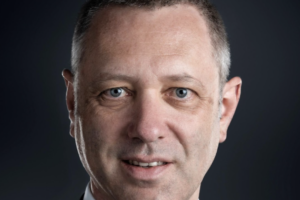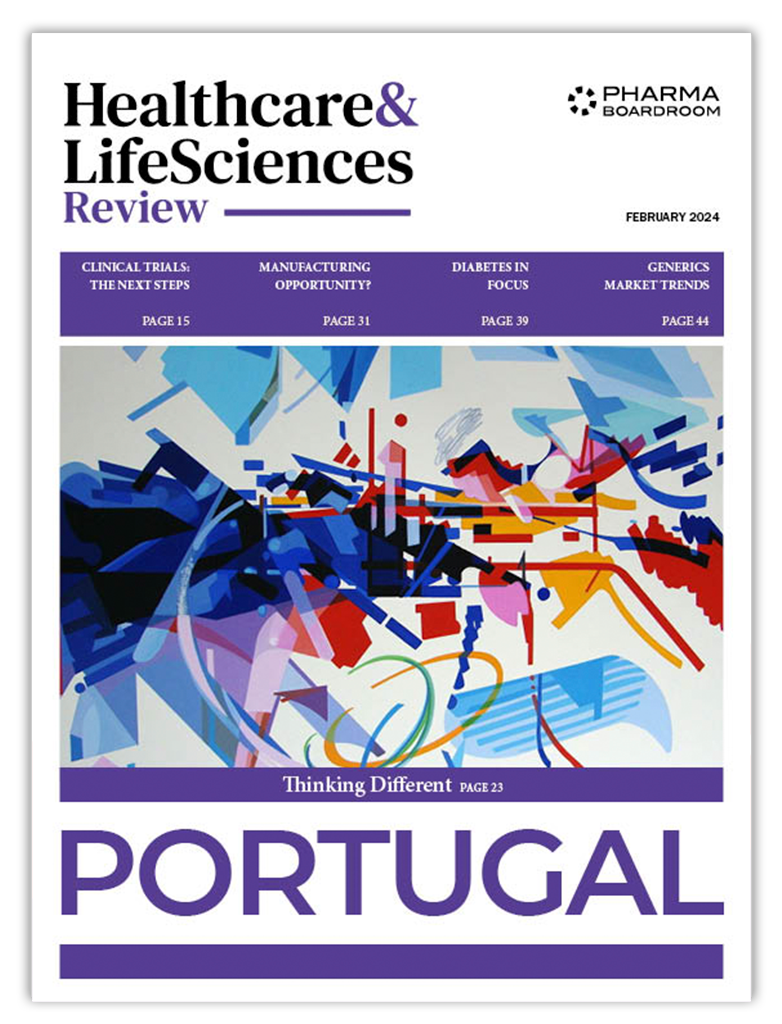Jean Paul Scheuer, General Manager for Sanofi Genzyme and MCO Lead for Greater Gulf, highlights the company’s expanding footprint in the region, the organizational changes brought about by global CEO Paul Hudson, and how Sanofi has managed to launch 20 new products in the last year.
Can you outline Sanofi’s footprint in the region and the areas of its global portfolio you are currently prioritizing?
Sanofi is operating as one company with four major portfolios divided by therapeutic area. The first is vaccines, the second is consumer care, the third is general medicines which is mainly made up by primary care medicines, including diabetes and cardiovascular, and the fourth is Sanofi Genzyme, focused on specialty care, which is expanding rapidly.
The legacy of Sanofi Genzyme is in rare disease and multiple sclerosis, and we are also aiming to become a leader in immunology, where we have started strongly with Dupixent (dupilumab). There are several upcoming launches as the company moves closer to becoming a market leader in oncology and rare blood disorders once again.
In 2020, we had 20 new launches in the region, some of which were new indications, and we have launched ten new indications in 2021. We are extremely active in developing our specialty care business in the region, with a special focus on Saudi Arabia, the United Arab Emirates (UAE), and Kuwait.
20 launches in one year seems like quite an accomplishment! Can this success simply be attributed to a more focused approach in the region and what are the challenges that came with it?
The main challenge for the company was managing many projects simultaneously. The opportunity first arose to register products in the UAE before rolling them out regionally.
In the UAE, once you obtain US FDA or EMA registration, you can introduce a product in one or two months; the country has worked hard to make innovation available as soon as possible by improving its regulatory environment. The UAE Ministry of Health and Prevention has done impressive work.
Sanofi has been quick in the registration process thanks to its fantastic regulatory affairs department and has been able to launch products for multiple myeloma, different indications of Dupixent — asthma, nasal polyps, and atopic dermatitis.
The region ranks among our most important markets globally and is routinely the second or third location in which Sanofi launches new products after the United States or Europe. To name a few upcoming launches for the next 12 months, we will be introducing more Dupixent indications and a new clinical innovation that helps treat more than 80 percent of breast cancers.
We are lucky to work in a company with such an exciting journey ahead after a relatively slow decade in terms of launches. After his arrival in 2019, our CEO Paul Hudson started the company’s new chapter, doing a fantastic job to introduce a new way of working, refocusing the priorities, and giving us a clearer sense of purpose. Today, Sanofi is a real research-based company with specific priorities in terms of execution.
You started your journey with Sanofi in the Middle East even before Paul Hudson took over as global CEO. Can you share your experience in that transition to a new chapter?
Of course, we were still doing our jobs well prior to Paul Hudson’s arrival, bringing new therapeutic solutions to patients, but we were lacking a certain clarity in our vision and a sense of purpose. Paul joined in September of 2019, and I must say he really hit the ground running. Within just weeks, he was laying out his vision for the company for the years to come and setting in place a framework to align strategy and execution. Great leadership can be positively infectious, and he was very quickly able to get colleagues to buy into his vision and share his passion to put the company on a fast track to innovation and growth. It was quite fascinating to watch things unfold and it didn’t take long for the results to show, for the new strategic priorities to start translating into more robust business performance and improved patient care.
The real transformation started in the first quarter of 2020; the COVID-19 pandemic threatened to interrupt the plan, but we did not yield. Today, Sanofi is working at full speed to execute the strategy, looking to transform the practice of medicine. This has not been easy but moving over 100,000 people never is!
Many of your colleagues managing operations for Big Pharma in the Middle East say that there is never a dull day in their job. What are some of the characteristics of this part of the world that make it an exciting place to work and allow Sanofi to make a difference?
I came to this region after roles in Austria and then the Ukraine, a market that was growing incredibly fast. In emerging markets, you never know what to expect, almost nothing goes exactly as planned. Some people do not like the continuous disruption, but it is my passion; I go to bed every night feeling that we did something good either for patients or our team.
Naturally, none of this would be possible if countries in the Middle East, especially in the Gulf, were not so eager to transform and improve the lives of their populations. I had never seen authorities be so willing and open to listen and have direct conversations at high levels; they make themselves available to people that want to contribute.
From a company perspective, the region is important because it is open to innovation. That is why Sanofi has been able to invest in manufacturing capabilities in Saudi Arabia, for example, becoming the first foreign pharmaceutical company to have a fully owned manufacturing site, producing over 20 million boxes each year.
The region is also important because of the prevalence of diseases such as diabetes – with a rate of 15-20 percent, compared to Europe’s 8-10 percent – rare diseases and asthma. Sanofi has a portfolio that aligns well with the region’s needs.
Aside from the manufacturing investments and myriad of upcoming launches, what are Sanofi’s priorities for Saudi Arabia in the medium term?
The main objective today is to align the fantastic upcoming opportunities for our portfolio, most of them first-in-class, with Saudi Arabia’s Vision 2030 which is the top priority for the country’s leadership. We must be able to navigate the country’s budgetary constraints to find solutions that grant patients access to key innovations.
Fortunately, we believe that the country is willing to move in that direction, listening to the industry in search of good outcomes for the population. Budget constraints are relatively new in this region and Saudi Arabia can be a complicated place in terms of access, but as long as pharma companies such as Sanofi are working towards the same goal as the authorities, they will receive support.
As Sanofi moves to obtain approval for its global pipeline in Saudi Arabia, are there ongoing discussions about health technology assessment (HTA) to aid decisions on the reimbursement of pharmaceuticals or recommendations for their use?
Saudi Arabia is not quite ready for HTA just yet; there was a discussion recently with the Ministry of Health where they explained their plan, but it will probably not come within the next two years. However, the authorities’ will to accelerate the process and make it happen is strong and when they have a clear target, they generally reach it.
One of the areas that is accelerating in Saudi Arabia, and one where Sanofi is a pioneer, is the utilization of real-world evidence. The country has a well-organized system and access to an immense quantity of data. Our role will be to discuss and negotiate with the authorities to make good and productive use of the data, understanding better the performance of our molecules.
Sanofi’s regional organization has already started a few projects in Saudi Arabia and the UAE related to the use of real-world evidence, becoming a leader among the global group’s emerging markets. We have a team fully dedicated to that effort and have received strong support from headquarters. Looking at how the system is organized, access to data will be the key driver of healthcare policy and will continue to have a strong influence on our strategy.
With regards to Saudi’s Vision 2030 and the requirement that all sales representatives be local staff, has Sanofi been able to find the right talent? Moreover, is the company going beyond the minimum requirements?
Access to talent can sometimes be a challenge, but we are seeing signs of positive change. The current priority is to give jobs to Saudi nationals first and decrease the national unemployment rate through jobs in the private sector, which is understandable and natural. I am personally a very strong supporter of this after previously seeing it in Ukraine.
At Sanofi we are always looking to incorporate more Saudi nationals into our workforce, not merely in order to comply with Saudization requirements but because we genuinely believe that, for any country, investing in its own people and developing a dynamic local talent pool is vital to securing its long-term national interests and achieving sustainable development and growth.
We believe in investing in the future of Saudi Arabia, in investing in the kingdom’s citizens, who are the ones that will drive the next stage of the country’s economic transformation, We are committed to opening new pathways of opportunities for Saudi graduates and jobseekers and we continue to invest heavily on training to have a more competitive national workforce – and not just in sales and HR – and retain talent with the expectation that they will be the managers of tomorrow and will be able to have a greater say in shaping the future of their country.
Apart from leaving an organization with well-trained talent, what legacy would you like to leave behind when you move on?
The most important legacy will be at the level of my team, which is why I am working to foster talent that has a clear vision of what they want to achieve themselves.
On a larger scale, I want to contribute to changing the way healthcare is given to people. I find it very moving when a member of the team shares an example of a patient being diagnosed and receiving a life- changing treatment. I have heard testimony from patients with atopic dermatitis, for example, that did not have a life before receiving our treatment.
Is there a final message you would like to convey to our international audience of executives?
While there are of course challenges to confront, Sanofi is doing well in this region. Something very important to consider about Saudi Arabia in particular is that any executive coming here must leave behind the preconceptions he or she might have about this country because the reality is not what one might see in the news.
I am not a historian, but there are not many examples of countries willing to change so dramatically in only 10 years. Saudi Arabia’s Vision 2030 is transforming the economic structure, building infrastructure, and making big changes to society. What the country has done with respect to women’s rights and freedoms, for example, is truly amazing.







